Our Alumni Work at Top Companies





Python Course Curriculum
It stretches your mind, think better and create even better.
Topics:
1. What is an Application?
2. Types of Applications
3. Web Application Fundamentals
4. Web Technologies: (List key technologies and their roles)
Frontend: HTML, CSS, JavaScript, React
Backend: Python, Java, Node.js
Databases: SQL(MySQL, PostgreSQL), NoSQL(MongoDB).
5. Software Development Life Cycle (SDLC)
Phases: Planning, Analysis, Design, Implementation (Coding), Testing, Deployment, Maintenance.
6. Application Development Methodologies
Agile: Core principles, Scrum, Kanban
Waterfall
Topics:
1. What is Data?
2. Types of Data
3. Data Storage
4. Data Analysis
5. Data Engineering
6. Data Science
Topics:
The Importance of Computing Power
Key Computing Technologies
CPU (Central Processing Unit)
GPU (Graphics Processing Unit)
Cloud Computing
What is the Cloud?
Cloud Service Models: IaaS (Infrastructure as a Service), PaaS (Platform as a Service), SaaS (Software as a Service)
Topics:
1. What is Artificial Intelligence (AI)?
2. How AI Works?
3. Key Concepts
Machine Learning (ML)
Deep Learning (DL)
4. Key Concepts
What is Generative AI?
Examples: Large Language Models (LLMs), image generation models.
5. AI in Everyday Learning
Topics:
1. Customer Relationship Management (CRM)
2. How AI Works?
3. Key Concepts
Machine Learning (ML)
Deep Learning (DL)
4. Key Concepts
What is Generative AI?
Examples: Large Language Models (LLMs), image generation models.
5. AI in Everyday Learning
Topics:
1. Python's applicability across various domains
2. Installation, environment setup, and path configuration
3. Writing and executing the first Python script
Topics:
1. Keywords, Identifiers, and basic syntax
2. Variables, Data Types, and Operators
3. Introduction to Input/Output operations
Topics:
1. Conditional Statements: If, Elif, Else
2. Loops: For, While, and control flow mechanisms
3. Understanding and defining Functions in Python
Topics:
1. String operations and manipulations
2. Lists and their operations
3. Introduction to Tuples and Sets
Topics:
1. Detailed exploration of Dictionaries
2. Frozen Sets and their use-cases
3. Advanced list comprehensions
Topics:
1. Advanced methods in Lists, Tuples, and Dictionaries
2. Sets, Frozen Sets, and operations
3. Comprehensive look into Python Collections
Topics:
1. Exploring types of Functions and Arguments
2. Lambda functions and their applications
3. Map, Reduce, and Filter functions
Topics:
1. File operations and handling different file formats
2. Working with Excel and CSV files in Python
3. Understanding and using Python Modules and Packages
Topics:
1. Deep dive into Classes, Objects, and Methods
2. Constructors, Destructors, and Types of Methods
3. Inheritance, Polymorphism, and Encapsulation
Topics:
1. Exception Handling: Try, Except, Finally
2. Creating and using Custom Exceptions
3. Utilizing Regular Expressions for pattern matching
Topics:
1. Introduction to Django and its features
2. Setting up a Django project and understanding its structure
3. MVC Model, creating views, and URL mapping
Topics:
1. Database models and migrations
2. Admin interface and deploying Django applications
3. Forms and handling user inputs
Topics:
1. Advanced URL routing and views
2. Class-based views and middleware
3. Working with static and media files
Topics:
1. Building RESTful APIs with Django REST Framework
2. Serializers and request handling
3. Authentication and permissions in APIs
Topics:
1. Writing tests for Django applications
2. Deployment strategies and best practices
3. Configuring Django applications for production
Topics:
1. Introduction to Data Science with Python
2. Data manipulation with Pandas
3. Data visualization with Matplotlib and Seaborn
Topics:
1. Advanced Pandas techniques and operations
2. Time Series data analysis with Pandas
3. Combining, merging, and reshaping data frames
Topics:
1. Advanced visualization with Matplotlib
2. Interactive visualizations with Plotly
3. Geospatial data visualization
Topics:
1. Basics of machine learning with Python
2. Using Scikit-learn for machine learning models
3. Model evaluation and validation techniques
Topics:
1. Introduction to Neural Networks and Deep Learning
2. Working with text data and Natural Language Processing (NLP)
3. Introduction to Big Data technologies with Python
Topics:
1. Cloud Computing Basics
Understanding cloud computing: Definitions, service models (IaaS, PaaS, SaaS), and deployment models (public, private, hybrid, multicloud).
2. Cloud Service Providers Overview
Introduction to major cloud platforms (e.g., AWS, Azure, Google Cloud), focusing on their core services relevant to developers.
3. Cloud-based Development Environments
Setting up and utilizing cloud-based IDEs and development tools to streamline development workflows.
4. Deploying Applications on the Cloud
Basic concepts of application deployment on the cloud, including containerization basics with Docker and initial orchestration concepts.
Topics:
1. Understanding DevOps
The philosophy, practices, and benefits of DevOps in modern software development, emphasizing collaboration, automation, and integration
2. Version Control with Git
Deep dive into using Git for source code management, including best practices for branches, commits, merges, and pull requests.
3. Continuous Integration/Continuous Deployment (CI/CD)
Introduction to CI/CD pipelines, overview of tools ( GitHub Actions), and setting up basic pipelines for automated testing and deployment.
4. Monitoring and Feedback
Basics of application monitoring, log management, and utilizing feedback for continuous improvement.
Topics:
1. Containers and Docker
Introduction to containers, Docker fundamentals, creating Docker images, and container management basics..
2. Managing Application Infrastructure
Basic strategies for managing infrastructure as part of the application lifecycle, including introduction to infrastructure as code (IaC) principles.
Topics:
1. Scalable Application Design
Principles of designing scalable applications that can grow with user demand, focusing on microservices architecture and stateless application design.
2. Cloud-native Services for Developers
Leveraging cloud-native services (e.g., AWS Lambda, Azure Functions, Google Cloud Run) for building and deploying applications.
3. Databases in the Cloud
Overview of cloud database services (SQL and NoSQL) and integrating them into web applications.
4. Security Basics in Cloud and DevOps
Understanding security best practices in cloud environments and throughout the DevOps pipeline.
Topics:
1. Agile and Scrum Methodologies
Incorporating Agile and Scrum practices into team collaboration for efficient project management.
2. Code Review and Collaboration Tools
Utilizing code review processes and collaboration tools GitHub, to enhance code quality and team productivity.
3. Automation in Development
Exploring automation beyond CI/CD, including automated testing frameworks, database migrations, and environment setup.
4. DevOps Culture and Best Practices
Cultivating a DevOps culture within teams, embracing continuous learning, and adopting industry best practices for sustainable development.
Topics:
1. What is Generative AI?
2. Key Applications:
Text (ChatGPT, Claude, LLaMA)
Images (DALL·E, MidJourney, Stable Diffusion)
Images (DALL·E, MidJourney, Stable Diffusion)
Audio (Music Generation, Voice Cloning)
Code (GitHub Copilot, Cursor)
Code (GitHub Copilot, Cursor)
3. Evolution of GenAI:
Rule-Based → Deep Learning → Transformers
GANs vs. VAEs vs. LLMs
Topics:
1. Effective Prompt Design
cInstruction-Based, Few-Shot, Zero-Shot
2. Advanced Techniques:
Chain-of-Thought (CoT) Prompting
Self-Consistency & Iterative Refinement
3. Hands-on
Optimizing prompts for GPT-4, Claude, LLaMA
Topics:
1. Why Transformers? (Limitations of RNNs/LSTMs)
2. Key Components
Self-Attention & Multi-Head Attention
Encoder-Decoder (BERT vs. GPT)
3. Evolution:
BERT → GPT → T5 → Mixture of Experts
4. Large Language Models (LLMs)
5. Pre-training vs. Fine-tuning
6. Popular Architectures:
GPT-4, Claude, Gemini, LLaMA 3
BERT (Encoder-based) vs. T5 (Text-to-Text
Topics:
Introduction to AI Agents
1. What are AI Agents?
2. vs. Traditional AI:
3. Applications:
AI Agent Frameworks
1. CrewAI (Multi-Agent Collaboration):
2. n8n (Workflow Automation):
Topics:
Designing AI Agents
CrewAI + n8n: Automating Business Workflows
Multi-Agent Systems: Collaboration & Specialization
Real-World Applications
Case Studies : AI Customer Support Agents
TOOlS & PLATFORMS







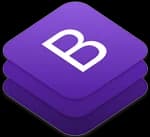
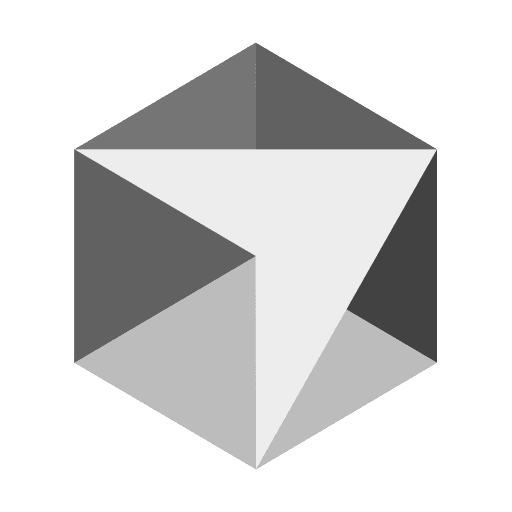


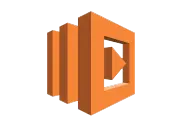



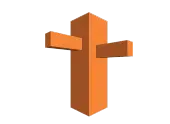
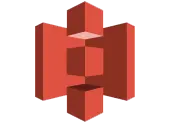




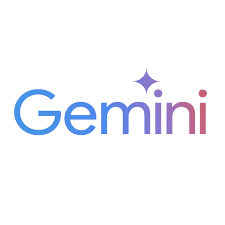

Our Trending Courses
Our Trending Programs
IT Engineers who got Trained from Digital Edify




LEARNERS
BATCHES
YEARS
SUPPORT
100000+ uplifted through our hybrid classroom & online training, enriched by real-time projects and job support.
Come and chat with us about your goals over a cup of coffee.
2nd Floor, Hitech City Rd, Above Domino's, opp. Cyber Towers, Jai Hind Enclave, Hyderabad, Telangana.
3rd Floor, Site No 1&2 Saroj Square, Whitefield Main Road, Munnekollal Village Post, Marathahalli, Bengaluru, Karnataka.